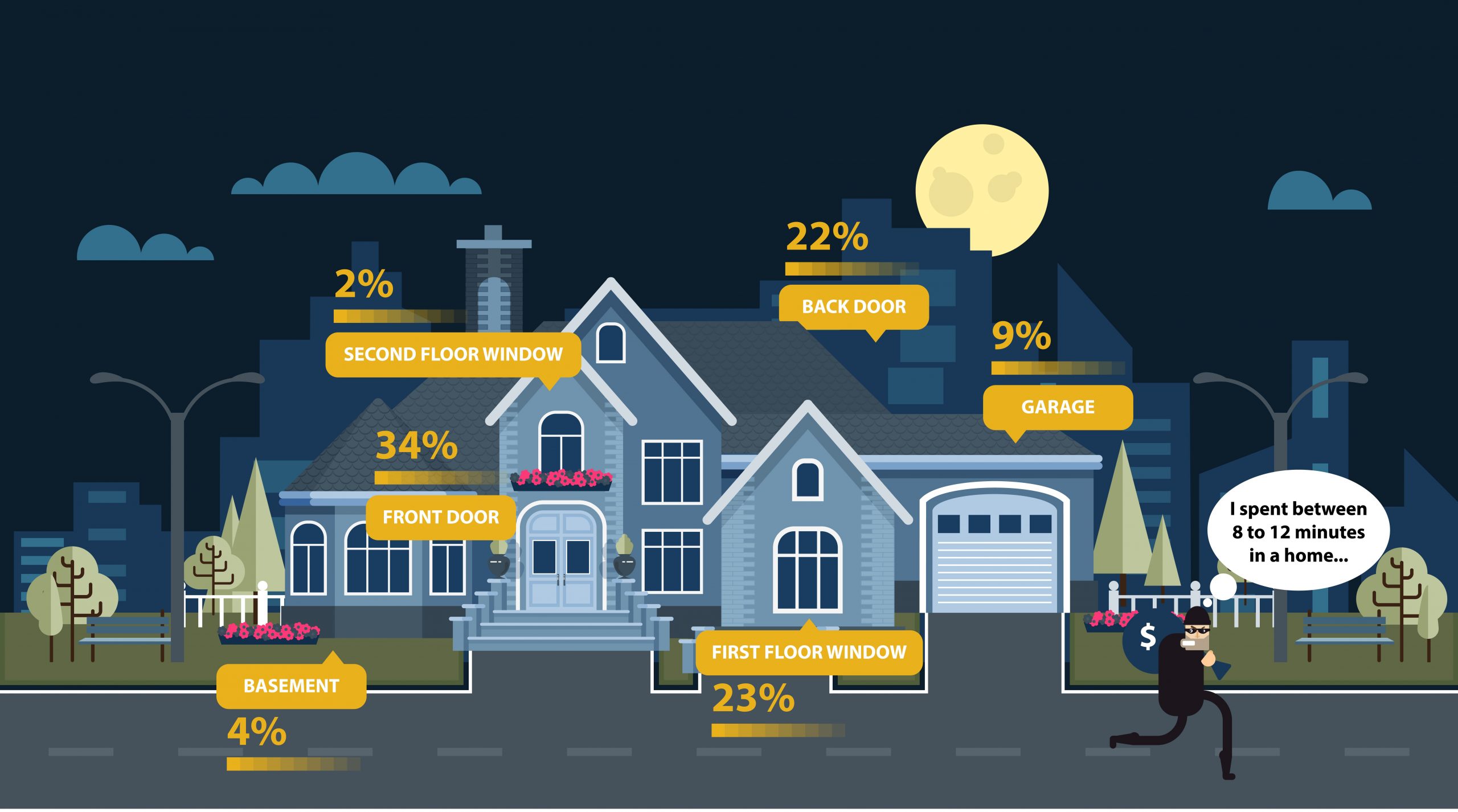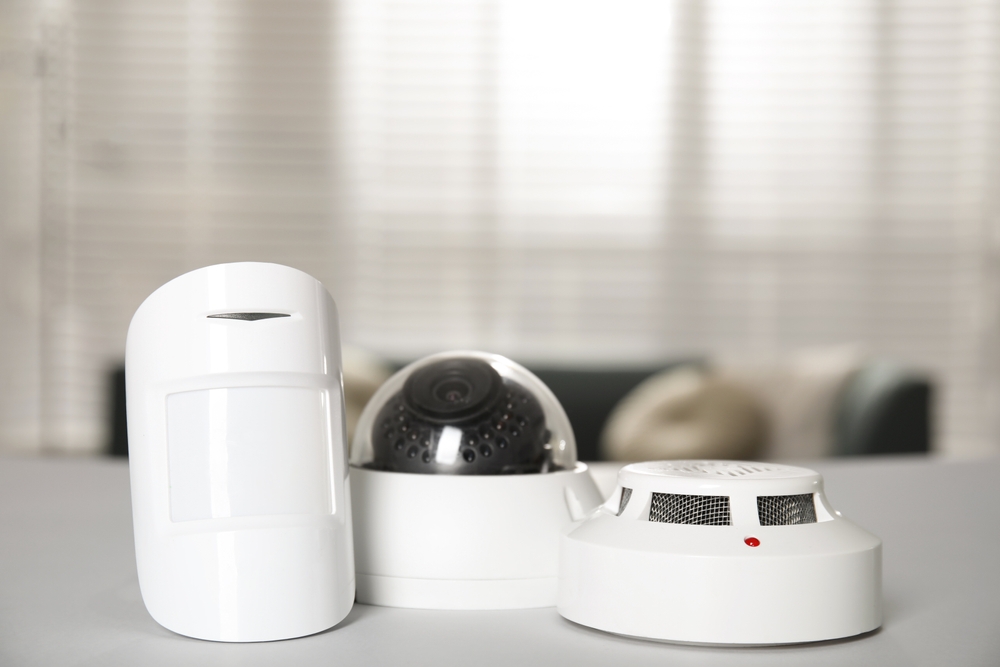Most of us use the terms robbery and burglary to mean the same thing without really thinking about it. There is a difference between robbery vs burglary when used as legal terms. While each of these terms refers to a crime, they are different in the severity of the crime and the punishment resulting from each. The distinction may or may not matter to the person committing the crime. If you are the victim of the crime, it may matter even more to you.
Robbery vs Burglary: Similarities & Differences
Both terms refer to property crimes meaning either the theft of property from a person or through the unlawful entry into a structure with the intent to steal or commit a felony. A number of circumstances distinguish which crime is being committed.
Robbery
Robbery refers to the attempt by a person to take something of value from another person through the use of intimidation, force, or threat. During a robbery, the victim is present at the scene. In other words, robbery is a personal crime which involves the person committing the crime and one or more victims in the same place. A good example is being held up by a robber with a gun who threatens to shoot you if you don’t hand over your money.
Burglary
Burglary refers to the unlawful entry to a structure with the intent to commit theft or felony. No one must be in the structure at the time a burglary is committed. Burglaries occur to businesses, storage buildings, warehouses, and homes. It applies to all types of structures other than automobiles. A good example of burglary is when you come home from vacation to find your front door no longer locked and all of your valuables missing.
Robbery and burglary are not the only terms used to describe the theft of something. Extortion refers to a crime in which one person forces another one to do something they don’t want to in order to prevent damage to their reputation or finances. Depending on the specific situation and the jurisdiction where the crime occurs, it may be classified as larceny or theft.
Larceny refers to theft without illegal entry into a structure through force or non-forcible entry methods. The exception to this classification is when a person steals a motor vehicle. This theft is always considered larceny.
Theft is used here and in society to refer to the taking of items or money in any of a number of situations. It is more of a generic term used to describe robbery, burglary, and more frequently, larceny. You might think that theft is theft, regardless of the circumstances. The reason it is important to distinguish between these different crimes is to ensure the punishment is fitting for the crime. To further separate their severity, degrees are applied to crimes committed in each category.
Degrees of Burglary
Burglaries may be classified as misdemeanors or felonies depending on the state where they occurred. This difference in classification also affects the potential punishment for any related crime. Each state defines the degrees of burglary it recognizes and the conditions surrounding each.
Burglary in California
The state of California requires prosecutors to prove that a defendant entered a property without permission and with the intent to commit a crime once they gained entry. The California Penal Code lists houses, apartments, residential rooms, and businesses as the types of properties where a person might commit burglary. Others, such as tent and storage buildings, also qualify.
In addition, the prosecutor must prove the person entered with the specific intent to commit a crime. For example, if the person enters a home with the intention to steal jewelry, they are guilty of committing larceny. If they just broke in to “look around and see what’s there”, the prosecutor must consider other charges such as trespassing and/or destruction of private property.
California recognizes two types of burglary: first-degree and second-degree. First-degree is the burglary of any inhabited dwelling. This means that there are inhabitants using the dwelling even if they aren’t home at the time of the burglary. This includes properties not currently occupied due to a natural disaster or other local emergencies. That means that if your home is temporarily damaged from a flood and you must live elsewhere for a time, it is still considered an inhabited dwelling.
First-degree burglary is a felony and is punishable in CA by up to six years in county jail, a fine up to $1,000, and restitution to the victim. Second-degree burglary may be a misdemeanor punishable with up to one year in county jail and/or maximum fine, or a felony punishable by up to three years in county jail or state prison, and restitution to the victim. All charges usually include probation.
Burglary with explosives is a felony punishable with up to seven years in state prison in addition to a fine, probation or parole, and restitution to the victim.
Degrees of Robbery
California recognizes two types of robbery: first-degree and second-degree. First-degree occurs when the offense takes place in a home or other inhabited dwelling or vessel, the victim is at work as a transit operator or taxi driver, or they were a patron using an automated teller machine (ATM). Second-degree robbery includes all other robberies that do not meet the requirements of first-degree robbery.
To convict a person of robbery in California, the prosecutor must prove that they intentionally used force or intimidation to cause fear. They must also prove that the victim feared an unlawful injury, either to themselves or their property, at the time the robbery took place. Finally, the thief must take the property in the victim’s immediate presence and attempt to escape with that property.
First-degree robbery is punishable by three, four, or six years imprisonment. If the robbery includes conspiracy which takes place in the home or dwelling, punishment may be three, six, or nine years. Second-degree robbery is punishable by two, three, or five years in prison.
Robbery vs Burglary: The Issue of Weapons
The very nature of these types of theft makes robbery more dangerous and more likely to involve a weapon. Although most TV crime shows depict burglary as a late-night crime, real-life burglars are more likely to break in during the hours between 10:00 am and 3:00 pm when most people aren’t at home. Their goal is to steal your valuables without getting caught; they typically aren’t violent and avoid confrontation.
Robbers, on the other hand, use violence or the threat of violence to get what they want. When someone presses a hard object into your back and demands your money, it may be a gun or not. In either case, the robber counts on your fear of getting shot to give them your money and/or property.
In spite of this intention, some home burglaries do occur while the residents are home. Of these, some experience a violent crime. Homeowners need a comprehensive security system to protect their family and their property.
Tips to Protect You from Robbery
Robbery is the type of theft that most often involves weapons and violent acts. These acts happen away from home, making you more vulnerable. Still, taking the right precautions can help keep you from becoming a victim of robbery.
- Pay attention to your surroundings. Note the behavior of any individuals around you and whether their focus is on you. If someone looks suspicious, move quickly to an area with more people or into your car if it is close by.
- Don’t be distracted by other activities such as texting on your cell phone or listing to your MP3 player.
- Don’t go out by yourself at night and stay in well-lit areas with frequent traffic.
- Consider your appearance before you go out. Displaying expensive jewelry or carrying electronics is like a flashing neon sign to robbers.
- Purchase an electronic device that includes a tracking system.
- Limit ATM use to daytime in well-populated areas.
- Don’t carry your wallet in your back pocket and don’t carry a shoulder bag that hangs freely from your body.
- Don’t display large amounts of cash when paying for items.
Tips to Protect You from Burglary
Burglary occurs more often than most people imagine and it results in the financial loss of property. Often, burglars watch homes for some time before attempting to break in. They know the habits of the residents and the best way to get inside. Burglars are more likely to carry the tools of their trade like picks and glass cutters than weapons. Unfortunately, catching burglars is often very challenging.
A number of things you do, or don’t do, could make you a likely victim of burglary. Some ways to make your home less inviting to burglars include:
- Never leave a house key hidden outside. The burglars know all the common places that homeowners hide them including inside fake rocks or in flowerpots.
- Keep your entire home well lit, including all the entry doors and the garage door. Motion detectors that turn your lights on automatically are especially effective at deterring intruders.
- Evaluate all of your exterior doors. Are they within sight from the street or the neighbor’s house? Are they heavy, hung securely, and have working locks that aren’t easy to pick? If the answer is no, you need to invest in new doors and/or locks that make better barriers.
- Never leave the garage door open, even during the middle of the day. If the garage door isn’t working properly, have it repaired or replaced. Burglars go looking for homes with open garage doors as an easy method of access.
- Do any of your doors have glass windows in them or in panels beside them? Burglars know how easy it is to reach the interior locks by simply breaking a glass panel.
- Never assume a burglar is too big to get through a pet door. Some burglars aren’t beneath using small children to gain access to a home.
- Never leave ladders outside your home or have lattice or trees close to the house. These can all serve as tools to help burglars reach windows above the ground level.
- Install a modern security system that turns your home into a smart home.
What Is a Smart Home?
One of the biggest obstacles to stopping burglars in the past was that many homeowners never realized the real risk of their home getting burglarized. Even though burglars have admitted that a security system is one of the biggest deterrents when choosing a target, many homeowners failed to put a system in place.
Today’s technology has changed the face of home security and made it an even greater convenience in a number of ways. A smart home incorporates a security system, surveillance, and lighting with controls that work from your smartphone to control everything in your home.
Have you ever wondered what your pets were up to while you were at work? Do you worry that the kids make it home after school? A smart home system lets you check on pets, kids, and valuables in your home in real time, anytime, and from any location.
A smart system sends you alerts when someone approaches your home and turns on lights automatically when they move past exterior motion detectors at night. Use the same smartphone you rely on for communication to see what’s going on inside and outside your property. It’s a secure way to monitor everything that matters to you all the time.
Robbery vs Burglary: Getting Your Priorities Straight
It’s important to protect you, your loved ones, and your property both at home and away. The steps you take to prevent both will go a long way towards determining if you become a victim of either form of theft.
To learn more about a custom security package for your home, contact Smart Shield Systems. Get your free quote for a smart home system and learn how to get up to $1,500 of free state-of-the-art equipment and cutting-edge technology!





















